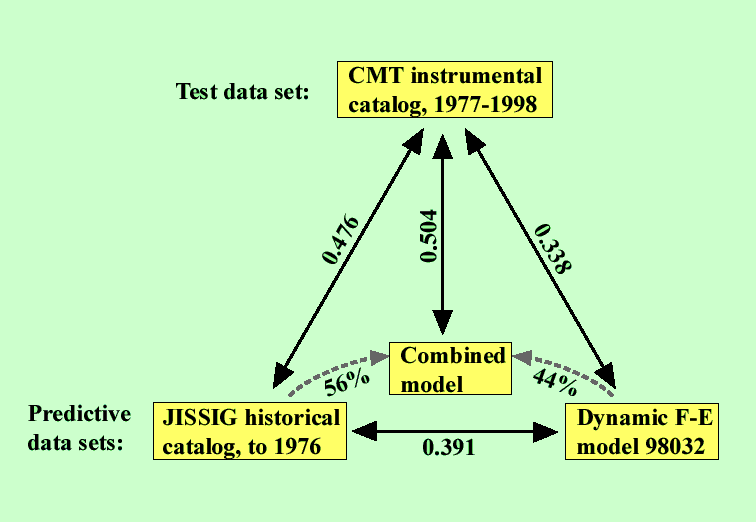
42. Bird, P., and Z. Liu (1999) Global finite-element model makes a small contribution to intraplate seismic hazard estimation, Bull. Seismol. Soc. Am., 89, no. 6, 1642-1647.
Abstract. Seismic hazard estimates require merging data sets from seismology, geodesy, and geology that have different footprints, which works best when there is a global model that relates them. The rigid-plate model serves this purpose for plate-boundary hazard estimation, but fails for intraplate hazard. The global thin-shell finite-element model of the lithosphere by Bird [1998] is a first attempt at a model with realistic intraplate regions. It is based on stress equilibrium and assumed flow laws for the lithosphere, incorporates topographic and geothermal variations and plate-boundary faults, and predicts long-term anelastic strain rates in all plate interiors. For comparison, the historical seismic catalog JISSIG [Utsu, 1996] and the instrumental catalog CMT [Dziewonski et al., 1997] are converted to seismic strain rates in intraplate regions corresponding to the finite elements. Spatial correlations are tested between the logarithms of strain-rates in order to reduce the dominance of the greatest earthquakes. The finite-element model has correlations of 0.391 with JISSIG and 0.338 with CMT, neither of which is as high as the correlation of JISSIG with CMT (0.476). This may mean that the model is defective and/or that intraplate seismicity contains a large fraction of aftershocks and other triggered events. If we take the CMT dataset as representative of the short-term intraplate seismicity that we might try to forecast, then multiple regression shows that this is best correlated (0.504) with a 56/44% mixture of the JISSIG and finite-element model strain rates. The contribution of the finite-element model, though small, is significant with 99.9% confidence.
See the Earth3 global finite-element grid in animated 3-D (2.2 MB animated .GIF)



